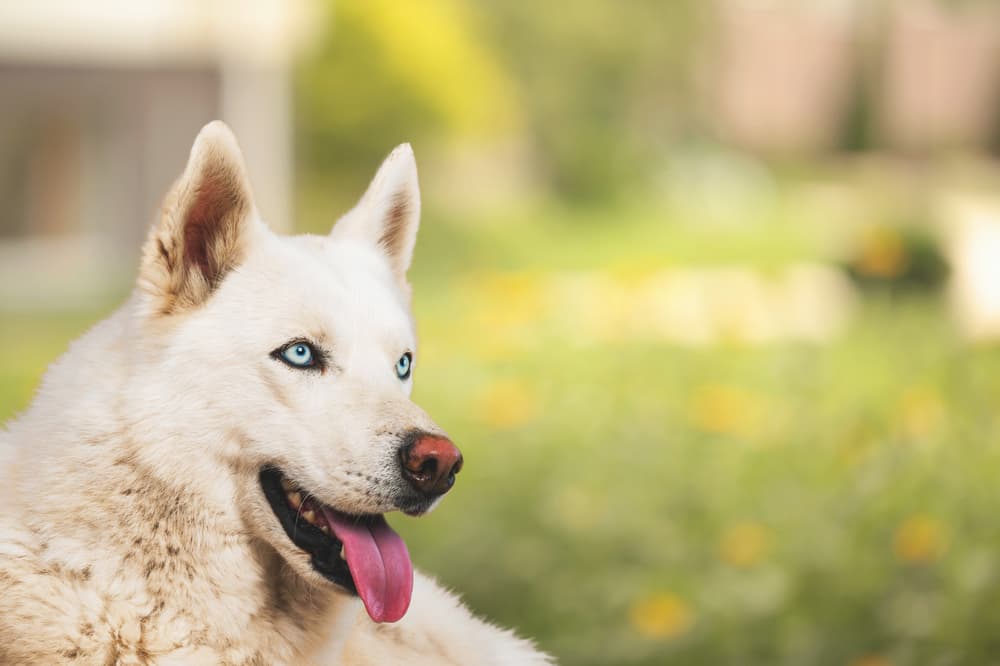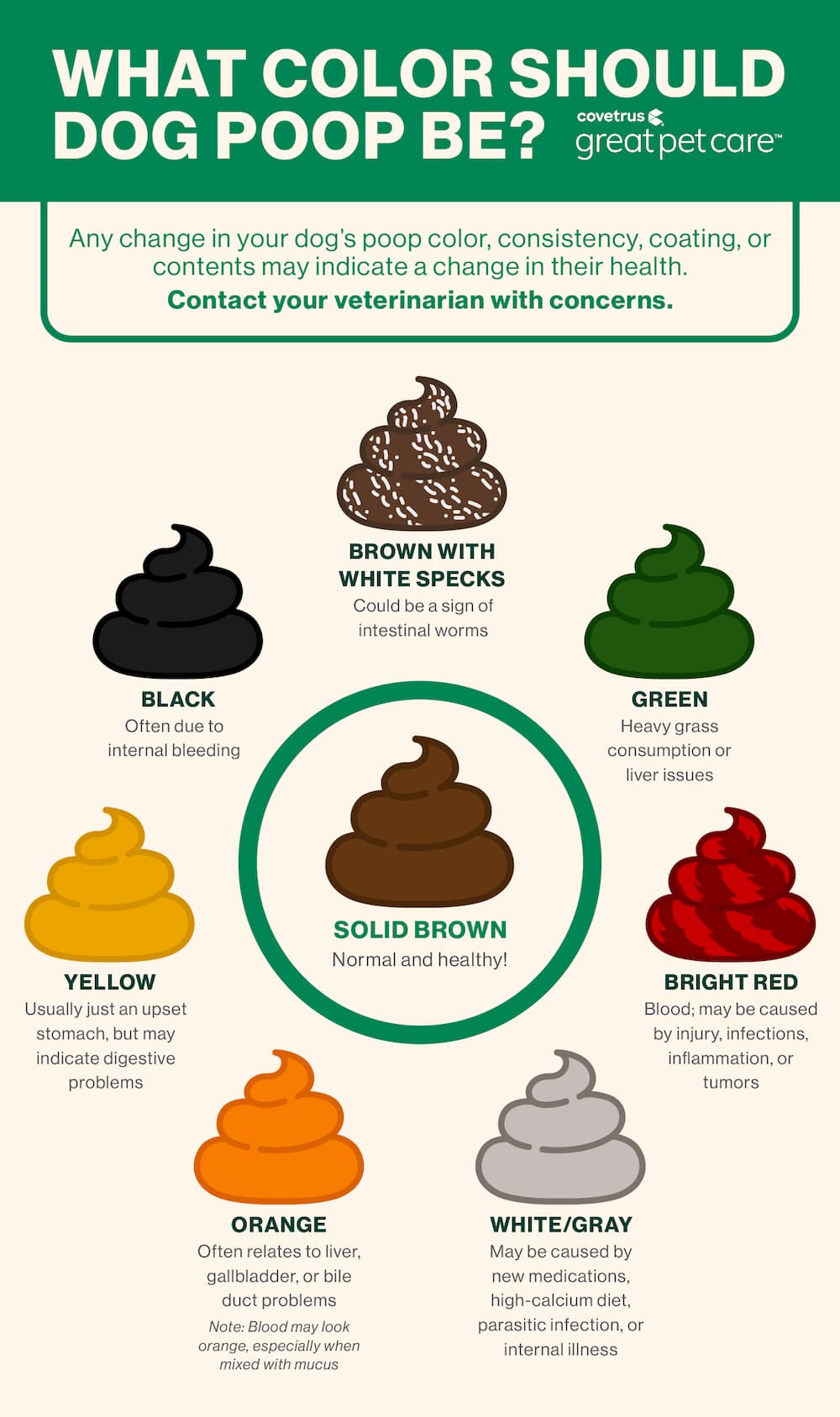Yellow Dog Poop: What It Means

All featured products are chosen at the discretion of the GreatPetCare editorial team and do not reflect a direct endorsement by the author or reviewer.
We can all agree: No one likes picking up dog poop. It smells, and if you’re not careful, it can also be messy. However, when you reach down one day to find yellow dog poop instead of your pup’s regular brown stool, this unpleasant chore might also suddenly feel like a cause for concern.
Paying attention to your dog’s stool is one of the best things you can do to monitor their wellness. Changes to dog poop—whether it’s the color, consistency, coating, or contents—may indicate a change in your dog’s health.
So why is your dog’s poop yellow? We’ll help you make sense of what it means and what you should do.
What Color Should Dog Poop Be?

First things first—dog poop should be brown. The exact shade depends on what your dog eats. For example, dyes in your dog’s food can stain their feces a variation of that color.
Feces is brown because of the breakdown of a substance called bile, which is an important part of digestion. Bile is made in the liver, stored in the gallbladder, and secreted into the intestines when food exits the stomach and enters the intestines. Most bile is reabsorbed as the food material is digested, but some gets trapped. It then undergoes changes as the food material is further digested into feces. This causes the originally green material to turn yellow and then brown.
Digestion of food into feces is a complex process. In addition to color, the consistency, coating, and contents are all important features of poop to consider when evaluating your pet’s health. Consistency refers to whether it’s firm, formed, soft, or liquid. Coating refers to whether there is mucus, blood, or both on the surface of the feces. The contents of feces should be fairly uniform. For example, finding blades of grass or pieces of a toy is abnormal.
Why Is My Dog’s Poop Yellow?

Of all the colors poop can be besides the normal brown, yellow is usually one of the least worrisome.
Red or black dog poop is an emergency, while yellow stool in dogs is more like a warning sign. Here are some of the more common causes of yellow dog poop.
New Food
Your dog’s diet and what they eat impacts the color of their feces. Some dog food formulas have ingredients that make feces more yellow or a lighter shade of brown. Similarly, some types of food processing can alter the hue of feces. Switching between canned or moist food and dry kibble can also make dog feces look more or less yellow.
Incomplete Digestion
An upset stomach—from changing dog food or a dog eating something they don’t normally eat—can cause irritation in both the stomach and intestines. One of the ways the body handles this is to push the material out faster. Veterinarians refer to this as decreased transit time: the time it takes from a dog eating a food to a dog passing it as feces.
Decreased transit time through the GI tract leads to softer feces that is yellow. The bile that is normally brown in feces hasn’t reached that stage yet and is still yellow (mustard-yellow to yellow-green). Similarly, this is why loose stool or diarrhea may be more yellow than usual.
Foreign Material
If your dog eats something yellow that isn’t food, it will end up in their feces (unless it causes an intestinal blockage, which is a greater cause for concern). For example, dogs can’t digest the yellow fuzz from a tennis ball and will pass it through the feces looking the same color as it went in.
Yellow Specks or Strings
Yellow specks or dots are most often caused by one of two things: partially digested food like corn or tapeworm eggs. Usually, these eggs look like grains of white rice or white specks but they may also have a yellow color. Yellow or white strings could be intestinal worms.
To protect against intestinal worms, veterinarians recommend year-round broad-spectrum parasite control for all dogs (1). Credelio Quattro offers all-in-one protection against six common canine parasites—ticks, fleas, heartworm disease, roundworms, hookworms, and tapeworms—in one convenient monthly chewable tablet. Interceptor Plus is a tasty chew your dog takes once a month to protect against five of the most common types of worms that infect dogs—including tapeworms. However, you’d need to pair it with a flea and tick control product to ensure your dog has 360-degree protection against the most common dog parasites.


If you see something that you think is abnormal in your dog’s feces, take a picture or bring a stool sample to your veterinarian.
Yellow Mucus
A slimy coating of yellow mucus on dog poop is due to intestinal inflammation. In healthy intestines, there is a protective mucus layer between the food material and the intestinal lining. When there is inflammation or damage to the intestines, this mucus layer can be shed onto the food material and eventually the feces.
In this case, the yellowish dog poop color comes from the bile involved in digestion. Intestinal inflammation can result from parasites, bacterial infection, food intolerance, or sharp objects such as sticks, rocks, and bones that your dog ate. If the intestinal damage is more severe, the mucus may have streaks of red blood or look an orange-yellow color.
What to Do if Your Dog’s Poop Is Yellow

Not every case of yellow dog poop is cause for concern. But it’s helpful to keep track of poop abnormalities, as they can sometimes be early warning signs of disease. Use a helpful tool like the GreatPetCare app to log and share key details and changes to your pet’s health. You can even upload photos to show your veterinarian exactly what you’re dealing with.
Download the GreatPetCare app for free today!
If you notice your dog’s poop is slightly yellow after recently changing their food, but they are eating and drinking and otherwise acting like themselves, it’s OK to monitor them at home. If other symptoms accompany yellow poop in dogs, such as vomiting, not eating or eating less, reduced energy, or abnormal behavior, then you should have a veterinarian evaluate your dog.
Likewise, if yellow bowel movements turn into watery diarrhea, it’s time for a professional to examine your dog.
Yellow dog poop that starts to turn orange or red is also a signal your dog needs to see the veterinarian immediately.
Dogs with liver disease or other serious underlying diseases who have yellow stool need to see a veterinarian, as it could indicate worsening disease.
By monitoring your dog’s poop, you can take a proactive approach to their health. Changes to dog poop can be one of the first signs of disease in many of the most common illnesses in dogs.
So, the next time you think picking up after your dog is a chore, think of it instead as an important part of being a responsible pet parent who prioritizes their dog’s well-being.
Dog Poop Color Chart

Reference
- AAHA-AVMA canine preventive healthcare guidelines. Retrieved from https://www.avma.org/resources-tools/avma-policies/aaha-avma-canine-preventive-healthcare-guidelines









